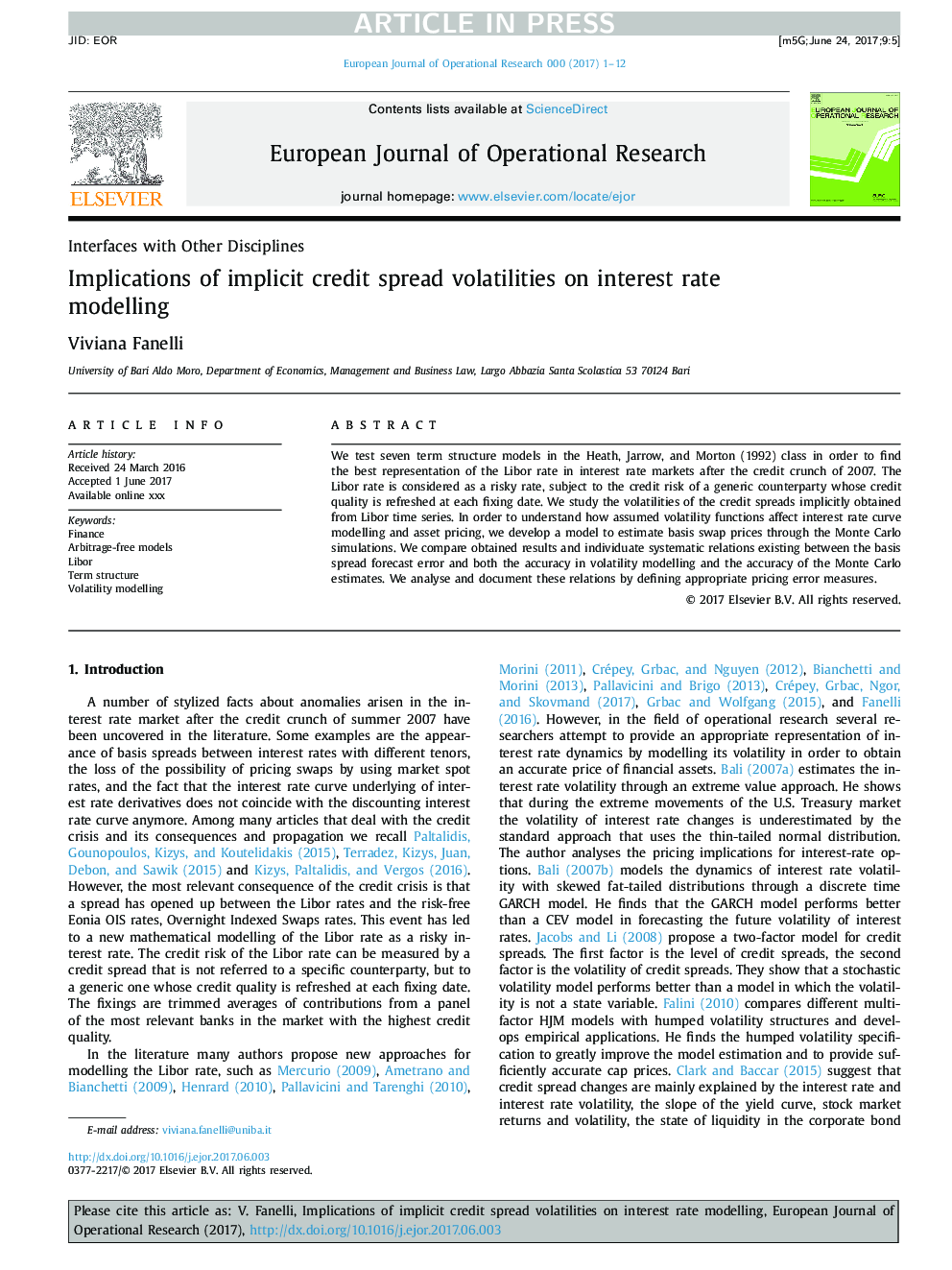| Article ID | Journal | Published Year | Pages | File Type |
|---|---|---|---|---|
| 4959398 | European Journal of Operational Research | 2017 | 12 Pages |
Abstract
We test seven term structure models in the Heath, Jarrow, and Morton (1992) class in order to find the best representation of the Libor rate in interest rate markets after the credit crunch of 2007. The Libor rate is considered as a risky rate, subject to the credit risk of a generic counterparty whose credit quality is refreshed at each fixing date. We study the volatilities of the credit spreads implicitly obtained from Libor time series. In order to understand how assumed volatility functions affect interest rate curve modelling and asset pricing, we develop a model to estimate basis swap prices through the Monte Carlo simulations. We compare obtained results and individuate systematic relations existing between the basis spread forecast error and both the accuracy in volatility modelling and the accuracy of the Monte Carlo estimates. We analyse and document these relations by defining appropriate pricing error measures.
Related Topics
Physical Sciences and Engineering
Computer Science
Computer Science (General)
Authors
Viviana Fanelli,
